The EU promotes the use of LNG in transport, through support for projects that promote the development of gas infrastructure or studies that pursue a greater implementation of gas in the transport sector.
Numerous European projects promote research on natural gas as fuel, with the aim of developing new infrastructures that allow its use to be enhanced. The longed de-carbonisation of transport promoted by national and community authorities has led Member States to pay more and more attention to the advantages it offers.
The European Union declared that by 2020, 5% of transport vehicles use CNG or LNG in their journeys, which calls for continued investments in this area. One of the latest initiatives in this regard has been the HDGAS, which focused on the integration of gas engines in heavy vehicles, the conclusions of which will be published in April.
Its objective has been the optimization of the kinematic chains for dual-fuel and pure gas engines, their integration in trucks and the confirmation that they comply with the Euro 6 emission regulations in real driving conditions, as well as with the limits of CO2 or greenhouse gases emissions.
BESTway project
For its part, the BESTway project aims to implement new re-fueling solutions for Natural Gas along the Atlantic Corridor, for which it has a budget of 7.7 million euros, of which 50% is financed by the European Union.
Currently, nine service stations are being built for the refueling of LNG between Algeciras and the north of Paris that will be linked to other European mobility corridors. Five of them are located in Spain, in the provinces of Cádiz, Jaén, Toledo, Madrid and Burgos, and four others in France, in the towns of Castets, Bordeaux, Poitiers and Paris.
Started in September 2014, the project, in which Gas Natural Servicios, Gas Natural Europe and GTD Information System participate, is expected to end in December 2018.
BESTway aims to strengthen the infrastructures available for natural gas and to save entry barriers for this fuel in order to increase its consumption. In this sense, investment and energy efficiency studies are being carried out, alongside the promotion of training of workers and drivers.
An app has been developed to facilitate payment and refueling by drivers. Through this, the quality of service and safety in loading operations is expected to improve.
CEF project Eco Gate
Along the same theme the CEF project Eco Gate has been launched, which has 9.86 million euros for the construction of 39 gas stations in Spain, Portugal, France and Germany, which represents a total cost of 47 million euros.
Spain will receive funding to develop a total of 26 stations in Barcelona, Burgos, Madrid, Murcia, Salamanca, Irun, Tordesillas, La Junquera, Cordoba and Cartagena, among other cities, while in Portugal 10 will be built.
Integrated Logistics Chain
As Bestway’s predecessor, the GARneT project was the first of the TEN-T network to promote the large-scale use of LNG. The project was developed between 2012 and 2014 and resulted in the installation of seven CNG refueling stations for LNG in Spain, three of them mobile, with a budget of 7.6 million euros.
After this experience, the LNG Blue Corridors project was launched, which allowed a greater definition of European corridors by establishing 14 strategic replenishment points to guarantee the availability of fuel located in countries such as Italy, Germany, France or Spain.
To these great advances in the field of mobility through natural gas is added the Core LNGas hive, which promotes an integrated, safe and efficient logistics chain for the supply of Liquefied Natural Gas as fuel in the transport sector, in particular in the maritime field.
Promoted by Puertos del Estado and coordinated by Enagás, it has 42 partners in Spain and Portugal and includes 25 studies for the adaptation of infrastructures and logistics-commercial development for the provision of small-scale services and bunkering services .
Its budget amounts to 33 million euros, intended for the implementation of pilot projects for the development of distribution barges, the use of LNG in tugboats and port cranes, and the adaptation of regasification plants for the supply of the gas.
For its part, SamueLNG is an initiative to promote the sustainability of maritime transport through the use of Liquefied Natural Gas in the smaller vessels along the Atlantic Arc. The second part includes the installation of a mobile platform for the supply of this fuel in the port of Gijón and a barge in Vigo.
This same port facility has participated together with Puertos del Estado in the GPEC project for the development of the Off-Grid Shore Power system, OGSP, which uses LNG as fuel and allows the supply of electrical and thermal energy to the vessel while it is in port.
Source: Cadena de Suministro









